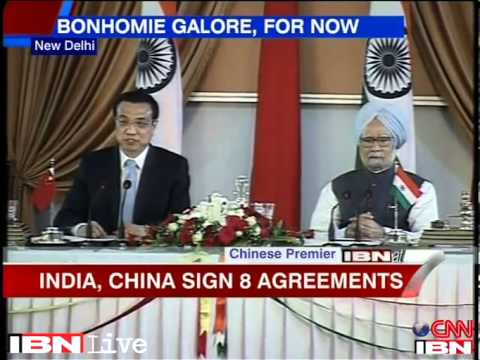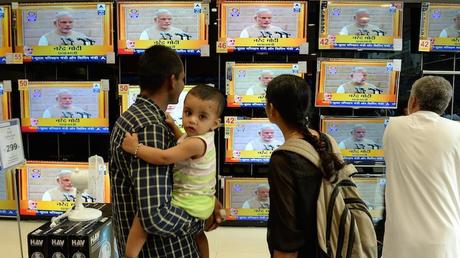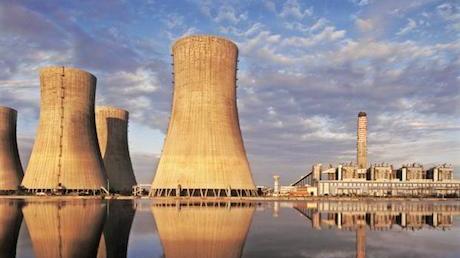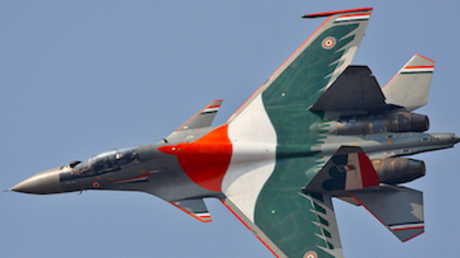
Foreign policy rarely plays a significant role during election campaigns, where agendas are almost always dominated by domestic issues. But that does not mean the outside world is not relevant to the outcome.
India's relations with neighbouring China, for instance, have not featured prominently in the current election campaign. But China's unprecedented economic and strategic rise lurks in the shadows, influencing the visions of India that the two leading contenders for the job of Prime Minister are trying to sell to the electorate.
China has only occasionally been mentioned directly by either Narendra Modi or Rahul Gandhi. Addressing an election rally in Arunachal Pradesh – a state in India’s northeast, claimed by China in its entirety – Modi warned the rising Asian dragon to “shed its expansionist policy and forge bilateral ties with India for peace, progress and prosperity of both the nations”.
Arguing that the world of today does not accept expansionist policy, Modi declared that "Arunachal Pradesh is an integral part of India and will always remain so. No power can snatch it from us". As the leader of a Hindu nationalist party, Modi’s warning to China was not surprising, and aimed at bolstering his credentials as a strong leader.
There is no doubt that dealing with an increasingly assertive China will be one of the primary foreign policy challenges for India’s next leader. India has found it difficult to fashion a coherent approach for managing its multifaceted relationship with China. The long-running territorial dispute between the two countries lies at the heart of the difficulties in bilateral relations. While China had in the past indicated its willingness to formalise the status quo on the border with some minor adjustments, it now seems reluctant to accept that formula in any eventual settlement of the border.
The India-China relationship in many ways mirrors China’s relationship with the United States. India and the United States both regard China as simultaneously a “strategic partner” and “strategic competitor,” and this situation is unlikely to change in the foreseeable future.
Chinese troops have made repeated incursions into the Indian side of the Line of Actual Control, as their common border is officially known. It has also been sometimes difficult for India to persuade China to abide by the various confidence-building agreements that the two sides have reached over the years.
China, on its part, has found it hard to fathom where India sits in the emerging regional order in the Asia Pacific region. Uneasy about the warming of political and strategic relations between the United States and India over the past decade, China is trying to assess the extent to which India and the US are capable of developing strategic cooperation, which it fears may become part of the American ‘rebalancing’ to Asia, designed to counter its rise.
The India-China relationship in many ways mirrors China’s relationship with the United States. India and the United States both regard China as simultaneously a “strategic partner” and “strategic competitor,” and this situation is unlikely to change in the foreseeable future.
The task for the next Indian prime minister will be to develop a coherent strategy for dealing with China that maximises the beneficial elements of the relationship, including trade, investment and cooperation on global issues of mutual concern, while minimising the potential for conflict between the two Asian neighbours. This will, obviously, not be easy.
Nevertheless, a constructed rivalry with China is not necessarily a bad thing, and it’s a strategy being used by both the BJP and the Congress to increase support for their economic policies. Most Indians are aware of the wide economic gap between India and China that has opened up over the past couple of decades. Indians who visit China for business, study or tourism are fascinated by that country’s elegant high-speed trains, smooth roads and expressways, and gleaming office towers. A vision of India that combines its democracy with all the material symbols of progress that one sees in China would be appealing to most Indian voters.
In fact, Modi himself has been impressed by China’s achievements, especially in manufacturing and infrastructure development. He visited China in November 2011 in his capacity as the Chief Minister of Gujarat and met with the leaders of Beijing and other major Chinese cities, including several communist party politburo members. He told the Chinese audiences that Gujarat was “the Guangdong of India”, the Chinese province adjacent to Hong Kong that was one of the pioneers of the pro-market economic policies launched by Deng Xiaoping in the late 1970s.
Although chief ministers of many Indian states have paid visits to China to see for themselves the progress that country has made and to invite Chinese firms to invest in their states, Modi’s was the most professionally organised. He took with him a delegation of Gujarati business leaders, made skilfully prepared presentations to Chinese audiences (with Chinese language voiceovers), and handed out bilingual business cards to the people he met.
To demonstrate Modi’s domestic popularity to his Chinese hosts, a Gujarat-based company organised a trip to Beijing by a large group of Gujarati students studying in various parts of China, to meet Modi and pay respects to him. This was the kind of show of strength and popularity that Chinese leaders are used to when they visit foreign countries and are greeted by well-orchestrated flag-waving Chinese crowds at the airport.
Refusing to be drawn into “the India-China cliché”, Rahul Gandhi has in the past dismissed China as “simple” and described India as a complex “beehive,” but he too is now happy to set up a contest with China. "We want India to challenge China as the manufacturing capital of the world,” he said during an election rally in Kerala in southern India. Gandhi has also questioned why India should be importing labour-intensive products such as toys and Ganesha idols from China when these items could be easily made locally.
Although most Indians are not inspired by China’s political system, they admire the speed with which China has managed to grow its economy and build world-class infrastructure. There appears to be a hankering in India for a prime minister who will lead India to rival China in economic development and strategic influence.
Many believe that Modi is their man. But the road to riches for India will not be as smooth. Rahul Gandhi may after all be right about the complexity of India.





